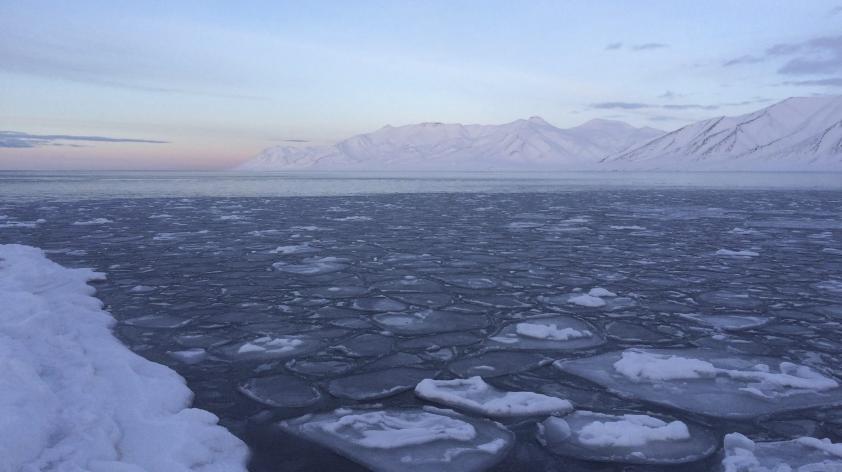
Polar Bears: Water, (Open) Water, Everywhere
I have just returned from the high Arctic archipelago of Svalbard, Norway, where we began fieldwork for our new study of denning polar bears. Admittedly, I was completely bowled over by the beauty of these mountainous islands, however, I could not help but wonder what would happen to the polar bear families we were monitoring once they left their winter dens. While the expansive views of the fjords connected to the Barents Sea were breathtaking, the utter absence of sea ice was shocking and did not bode well for the polar bear mothers and cubs currently nestled in their dens, but soon to be out and about, searching for the sea ice that will provide critical access to the seals that they depend on for food.
Capitalizing on past research done on the North Slope of Alaska by USGS and Brigham Young University, and in partnership with our long time collaborators, Polar Bears International (PBI) and new collaborative partners, the Norwegian Polar Institute, we are studying the denning behavior in an area that has undergone some of the most dramatic warming yet documented in the circumpolar Arctic. Thanks to the ‘MacGyver-like’ skills of the Director of Field Operations for PBI, we are using a remote controlled camera system that is a marriage between cutting edge communications technology and some good old-fashioned field engineering, allowing for an overwinter deployment and a completely non-invasive, yet high-definition, approach to behavioral monitoring. These tools will allow us to study how climate change is impacting the age and development of cubs, and the body condition of polar bear families as they emerge from their maternal dens.
Polar bear survival depends on a tenuous energetic balance. This balance relies on access to (via sea ice), fat-rich seals and an economy of behavior that drives the bears’ movements across the frozen landscape, and their strategy of energy conservation when food is seasonally scarce. Polar bear mothers epitomize this energy balance, as they will go without food for months at a time while in their maternal dens. During this long fast they are also pregnant and give birth to one to three very hungry and completely needy cubs that depend on the fat-rich milk that their mothers produce. To say that this arrangement stretches the limits of physiology is an understatement and it is clear that both adequate fat stores and efficient behavior are essential to the success of polar bear mothers.
For the cubs, born so small and dependent (i.e., altricial), the time in the den is likely crucial for survival; the longer they have to layer on fat while maturing in the den, the better off they’re apt to be when they begin their lives outside the den. Once they emerge from the den, they will need to follow their mother as she traverses the Arctic sea ice in an endless search for the next seal-meal.
We have a general understanding of the timing of den emergence, and certainly it seems likely that the first meal after a months-long fast is important for mother and cubs. However, what does a mother with young cubs do if the sea ice—and accordingly, access to seals—is miles and miles and MILES away? Well, she has no choice but to do what needs to be done to find food and, unfortunately for her cubs, the farther she has to walk or swim in search of ice, the less likely they are to survive their first year. And if a mother had less success hunting the previous year, and as a result is skinnier going into the den, she will be more energy deprived from the very start. This may influence the timing of her emergence from the den, and so too, the age and developmental maturity of her cubs upon emergence. Thus, the challenge to polar bears is clear and climate-change-driven sea ice losses are making it harder for them to ‘make a living’ in the Arctic.
2016 marked the first year of our study of maternal denning in Svalbard, and in order to assess the impact of climate change on emergence behavior, we’ll need to collect more years of data. We are, of course, up for the challenge and will be closely monitoring both sea ice dynamics and polar bears in the region over the coming years.













